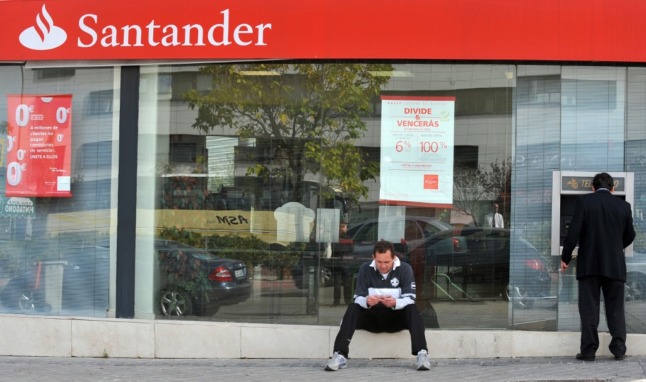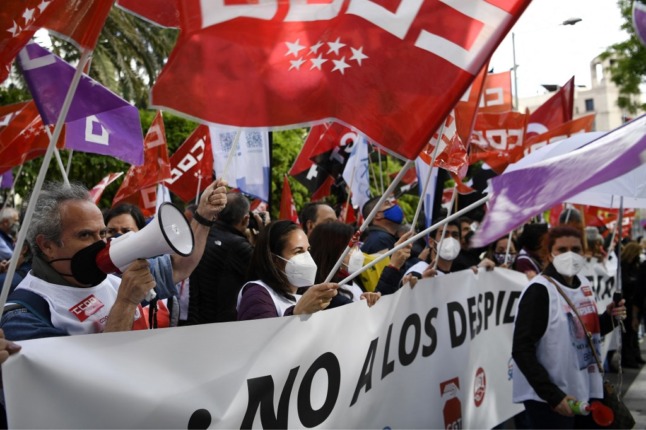Here's how they responded:
Which mobile phone carrier in Spain is best?
After surveying our readers, we’ve been able to conclude that… there’s absolutely no consensus in answer to this question. There are nine different providers that we’ve received feedback on, and none is the clear winner. The most voted for? Vodafone. The most voted against? Also Vodafone. So, apologies, but we can’t say without a doubt which mobile phone company is best.
What we can do is pass on the advice of our readers, who certainly had plenty to say about mobile phone service in Spain. Fast internet? Low prices? Customer service? That varies from carrier to carrier…
Vodafone
The British telecom giant (and third largest provider in Spain) attracted the most attention, good or bad, from the Local readers. To generalize, they tend to laud the quality of the coverage, but raise some doubts regarding the customer service.
Sarah Mooring was unequivocal in her analysis: ‘Vodafone are the best, we find’, adding that they offer ‘excellent customer service, and good, reliable, fast internet.’
Vodafone’s solid LTE/4G coverage attributed by is Eugene Bogorad in Barcelona to what he believes to be the ‘least populated network, ‘ with the ‘fastest speeds, always’ – though he recognizes that this doesn’t come cheap.
Linda Harris, near Valencia, agrees, writing, ‘we have found Vodafone to be best so far.’ She adds that the ‘shop in Miramar always has English speaking reps and [we’ve] always found them to be very helpful.’
Several readers, however, were very critical of Vodafone – like Hassan Sarwar in Málaga. He cautions, ‘don't sign any contract with Vodafone. Many of my friends, once signed, get extra charges for no reasons.’
Orange
Formerly France Télécom, Orange is the second largest mobile phone service provider on the Spanish market.* Again, reader reactions were mixed. Those who were pro-Orange cited its good coverage, but cost can be an issue.
Anthony Sanders sums up the advantages and disadvantages when he explains which provider her prefers: ‘Orange by far… you only get what you pay for!’
Orange also owns two economy carriers: Jazztel and Simyo.
Of these, Simyo was preferred by readers like Peter Moody, who likes that the brand is ‘cheap and straightforward'. He finds it ‘easy to keep real time track of usage,’ and likes being able to accumulate date and specify cost limits for features like roaming.
Lycamobile
The international carrier headquartered in the UK attracted some positive feedback.
Hassan Sarwar cites Lycamobile as his preferred alternative to Vodafone, thanks to their flexibility: ‘they have so many plans and offers for everyone.’
Another advantage he cites is the brand’s affordability. ‘Lycamobile deals are very cheap compared to rest of the market, plus they are using the same platform for coverage that Telefonica is using.’ he writes. ‘It’s very affordable for everyone.’
That opinion is seconded by Roger Rosedale in Cádiz province, who calls it a ‘great value’. And as an added bonus for those with friends and family abroad, he notes that ‘most of the world is included in my bundle.’
Grupo Más Móvil (including Yoigo, Pepephone, and Lebara)
Spain’s fastest growing telecommunications conglomerate is made up of a number of smaller providers, including the three above, mentioned positively by The Local readers.
Kris Hurman in Montroy (Valencia) says that with Vodafone, “I could not get reception on one side of my house. Now I never have a blind spot’ – thanks to Yoigo, which seems to be more effective in the countryside.
A ‘no-nonsense company with crystal clear tariffs and no strings attached’ is how James Oakwood, Seville resident, described Pepephone, which describes itself on its website as ‘a small group of normal people.’
And Richard Lewington of Madrid praised Lebara for ‘cheap, great coverage’ with ‘no commitment’. Like other Local readers, he had nothing bad to say about the Más Móvil companies.
The Rest
Strangely enough, readers had very little to say about Movistar, the top brand for Spain’s largest phone service provider and global telecom giant Telefónica. We’ll have to suppose that the company is more popular among locals than among expats.
Many, if not all, advised caution when it comes to signing a contract, especially with one of the big three (Movistar, Orange, Vodafone) that control 80 percent of Spain’s mobile phone service market. James Oakwood advises those considering a contract to ask themselves, ‘How easy will it be to leave if I’m not satisfied with the service?’
So, while there was no clear winner when it came to best mobile phone company, a couple general conclusions have emerged:
- The largest providers, like Vodafone and Orange, may have the best coverage and the fastest internet, but clients should be careful about signing a contract that they may not completely understand.
- Readers who have tried out the small or ‘economy’ carriers like Pepephone, Yoigo, Lebara, and Simyo seem to be mostly pleased with the prices, simplicity, and lack of commitment.
Or, you could take the advice provided by Local reader Anthony Stephen: ‘I would recommend just sticking to carrier pigeon or smoke signals while living in Spain. Much better customer service.’
By Edward O'Reilly





 Please whitelist us to continue reading.
Please whitelist us to continue reading.
I’ve been using Lobster mobile which runs on the movistar network. If you make calls to the UK it’s very good value. All calls to the UK and some other countries are included in the plan. The cheapest plan is 12 euros per month and you get unlimited calls and texts to the UK plus 6gb of data.